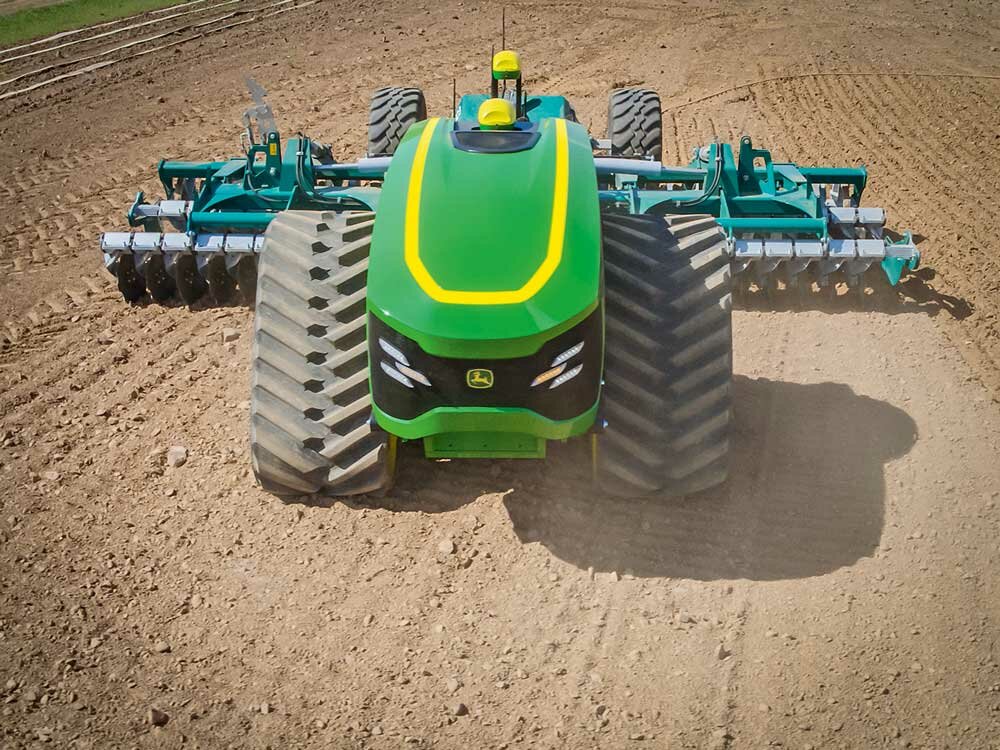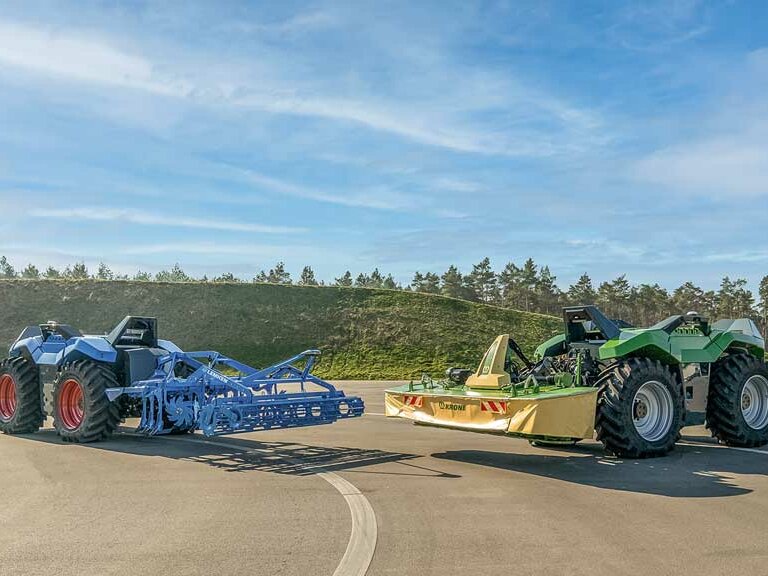Machine systems: What is the point of driving a tractor at all?
By Henning Rabe, PHAEN Agtech, Kiel
Tractors were yesterday? That might be an exaggeration. But measured against their hitherto undisputed central position, it is noticeable when machine manufacturers present their own drive or towing units.
Apart from the future energy supply, which also determines the drive technology, it is actually not a great challenge to build traction units for large equipment. Take an engine from the market, a gearbox from the manufacturer's shelf, which can also jerk with powershifting because it doesn't bother any driver, a solid chassis that gets the power into the ground. But a suspended cab? 20 front headlights? Cooler compartment with compressor or 13-inch display? For whom! Even lateral stability is assessed less strictly in homologation. Falling over without a driver means only metal damage. And on the field where these robots pull their tracks, there is no human being standing at the side of the road.
In the future, will tractors be nothing more than bought-in parts, purchased by the thousands from some mass-produced range, and fitted precisely in front of or underneath the machines?
The working system is the decisive factor
Manufacturers of implements traditionally have regional roots. Supply and acceptance also depend on the particularities of soil and cultivation. Tractors, on the other hand, travel everywhere. Their manufacturers have been able to scale up, grow faster, become more international. Tractor (manufacturers) have always dominated farmers' perceptions and decision-making processes and thus also the dealer structure. Tractor-strong dealers are largely A-league dealers, dealers without tractor ties B-league.
In the future, however, it could be true: Whoever controls the labour system determines the future of land management. Because precision is advancing into ever new dimensions. It requires precise seeing, detecting and interpreting. Years ago, when someone said that in the future every seed would have a number, he was laughed at in view of the current drill technology. Today, this is a scenario on the threshold of practice.
The development of work systems is a perfect interaction with high dynamics
Creative minds, data acrobats, software developers and machine builders are all involved. That's why we find the more intelligent large machines here, which are initially moved semi-autonomously, and the increasingly robust robots there, which grow fully autonomously in a swarm to become ever more powerful. Anyone in a development department who focuses on only one of the two paths - usually on the large machine due to the current supply and the large population in the market - must be careful not to miss the tipping point: namely, when robot manufacturers suddenly scale up because their data-based business models can be rolled out so rapidly that it is no longer technically possible to develop behind them.
Suboptimal solutions can remain successful in the market for a long time
There is a famous example of this: the QWERTY phenomenon. QWERTY has been the keyboard layout of the typewriter for 150 years. At that time, typing efficiency was characterised by the levers that pressed the letter stamps onto the ribbon and paper. At the beginning of typewriter development, research was carried out to find out which letter arrangement was best for the hands when writing (English) words. The QWERTY arrangement was absolutely suboptimal for this, but at least it was chosen in such a way that the levers did not get caught up in each other too often when typing fast, because that was really annoying and slowed down the typing process considerably. The fact that such machines were allegedly given to Henry Ford's secretaries for testing and ensured the company-wide switch from handwriting to typewriting is fitting for the inventor of the assembly line. Perhaps the force of habit was also decisive. Whatever the case, better keyboard arrangements never stood a chance after that. Until today, despite the fact that the technology behind the keyboard has made thousands of innovative leaps.
Optimum of efficiency for agricultural engineering
We come back to the term "working system". Progress here is indeed manifold. The dictate of efficiency, i.e. maximum work performance per unit of time, determines very many developments. Also important is the dictate of effectiveness, i.e. doing exactly what needs to be done without producing too many side effects. This optimum of efficiency and effectiveness determines our expectations - and of course the manufacturers' new product announcements.
Whenever devices are introduced today that work slowly or use electrical energy wastefully, the red pencils are immediately drawn. Yet something else is called for: namely to think further about the approaches on which these devices are based, to embed them in systems and processes that are scalable and do their work without human supervision. Day and night, possibly in inhospitable areas and powered by locally generated renewable energy. There, it could not only work, but also pay off.
Because not only the cabin, but also the working hours of people, their accommodation and catering costs could be calculated out of the total work done. Likewise, the investments in finding, training and educating such people, in induction, supervision, payroll, etc. would also be calculated. But if that is the case, then somewhere in the world there will be manufacturers willing to produce more such products. It is obvious that such solutions to problems will no longer be purely mechanically focused. "Everything without a driver" is more than a purely technological matter. The success factors are different.






